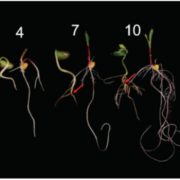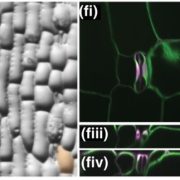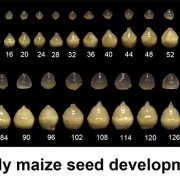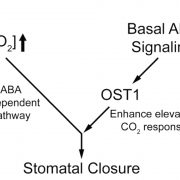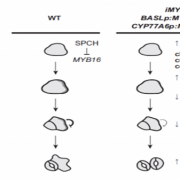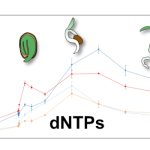Improving water use efficiency in maize
By Sonja Blankenagel, Stella Eggels, and Viktoriya Avramova
Plant Breeding, TUM School of Life Sciences, Technical University of Munich
Background: Growing crops with high water use efficiency can lower the requirement for irrigation and precipitation in this era of climate change. Water use efficiency, a measure of how much biomass a plant can achieve using a given amount of water, is influenced by the ratio of the amount of carbon fixed during photosynthesis to the amount of water lost through leaf pores, called stomata. To screen many plants for differences in water use efficiency, a proxy trait would be beneficial. Carbon isotope discrimination (Δ13C) has potential as such a trait because it is also influenced by the ratio of carbon fixation to stomatal conductance. However, the genetic basis for variation in water use efficiency in maize and the relationship between water use efficiency and carbon isotope discrimination are unclear.
Question: What is the genetic basis of water use efficiency in maize, and is there a direct genetic and physiological connection between water use efficiency and Δ13C?
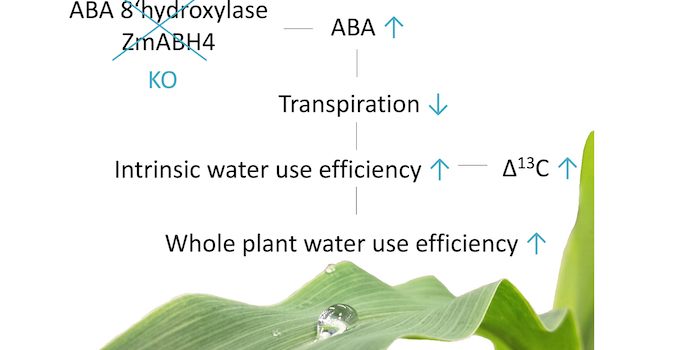 Findings: The single gene ZmAbh4 can alter water use efficiency: a knockout led to higher efficiency, and the introgression of the functional gene into a deficient background reduced water use efficiency. ZmAbh4 encodes an enzyme essential for the catabolism of the plant hormone abscisic acid (ABA), which controls stomatal conductance and hence leaf transpiration. The knockout of ZmAbh4 increased Δ13C in kernels, while the introgression of the functional gene into a deficient background decreased Δ13C in kernels, demonstrating a common genetic basis of water use efficiency and Δ13C. Additionally, we uncovered a physiological connection between the two traits, indicating that Δ13C is a useful proxy in screening for water use efficiency in maize.
Findings: The single gene ZmAbh4 can alter water use efficiency: a knockout led to higher efficiency, and the introgression of the functional gene into a deficient background reduced water use efficiency. ZmAbh4 encodes an enzyme essential for the catabolism of the plant hormone abscisic acid (ABA), which controls stomatal conductance and hence leaf transpiration. The knockout of ZmAbh4 increased Δ13C in kernels, while the introgression of the functional gene into a deficient background decreased Δ13C in kernels, demonstrating a common genetic basis of water use efficiency and Δ13C. Additionally, we uncovered a physiological connection between the two traits, indicating that Δ13C is a useful proxy in screening for water use efficiency in maize.
Next steps: The newly identified ZmAbh4 alleles should be combined with additional mutations to increase effect sizes. Additionally, further research is needed to determine if the relationship between Δ13C and water use efficiency holds across diverse genetic materials.
Sonja Blankenagel, Stella Eggels, Monika Frey, Erwin Grill, Eva Bauer, Corinna Dawid, Alisdair R. Fernie, Georg Haberer, Richard Hammerl, David Barbosa Medeiros, Milena Ouzunova, Thomas Presterl, Victoria Ruß, Rudi Schäufele, Urte Schlüter, Francois Tardieu, Claude Urbany, Sebastian Urzinger, Andreas P. M. Weber, Chris-Carolin Schön, Viktoriya Avramova (2022). Natural alleles of the abscisic acid catabolism gene ZmAbh4 modulate water use efficiency and carbon isotope discrimination in maize. https://doi.org/10.1093/plcell/koac200



